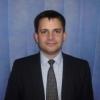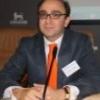 Dr David Brull, Consultant Cardiologist, Cardiology Clinical Lead The Whittington Hospital, explains the role of the interventional cardiologist and how this combines medical treatment and surgical technique.
Dr David Brull, Consultant Cardiologist, Cardiology Clinical Lead The Whittington Hospital, explains the role of the interventional cardiologist and how this combines medical treatment and surgical technique.
Within the field of Electrophysiology we are seeing many new advances in the type of implantable devices available. One example is an injectable ECG recording device that allows monitoring of a patient’s heart rhythm over a period of time in order to detect very infrequent, but clinically impotent arrhythmias
Total Health asks the UK's top Heart Specialists the following questions:
- Q1: What was it that made you want to specialise in the heart?
- Q2: What is your own area of special interest and why this?
- Q3: The treatment of heart conditions very often requires the integration of skills between the cardiologist and cardiac surgeon. This can be quite confusing for patients so how would you describe/explain this interplay?
- Q4: What in your opinion has been the most important innovation in the treatment of heart conditions?
- Q5: What in your opinion is the single factor that would most improve outcomes for heart conditions?
- Q6: What does the future hold for treating heart conditions?
Q1: What was it that made you want to specialise in the heart?
I was fascinated from an early age by many aspects of human biology and the heart in particular. I was intrigued by how the heart, which is essentially a muscle, could beat more than 1 billion times in our life without ever tiring.
Q2: What is your own area of special interest and why this?
I am an Interventional Cardiologist. My interest and area of specialisation is the treatment of obstructive coronary artery disease. This involves a combination of medical treatment and “surgical techniques”.
Obstructive coronary artery disease occurs when the arteries that supply the heart with its blood become “furred up” with fatty deposits, leading to reduced delivery of oxygen to the heart muscle. If this occurs slowly then patients will develop angina (pain in the chest with activity), however, this situation may occur suddenly if a blood clot completely blocks the arteries, leading to a heart attack which is a medical emergency.
As an Interventional Cardiologist I use angioplasty and stenting to open blocked arteries restoring the heart’s blood supply. This technique is called percutaneous coronary intervention (PCI), and involves passing a wire introduced through a tube placed through the skin under local anaesthetic, via the arteries in the leg or the wrist, guided up the blocked coronary arteries. A balloon is passed along the wire and gently expanded across the blockages improving blood supply. A stent (a small metal tube already manufactured so it sits on a balloon) is then inflated to high pressure providing an inner tube holding the coronary artery open. The balloon is then deflated and removed leaving the stent in place and an artery with normal blood flow. This procedure can be repeated in several places in more than one blood vessel to improve the heart’s blood supply. Most patients, even those admitted as an emergency, can be treated as a day case. Most heart attack patients may leave hospital by the second or third day.
In addition to the “sharp” end of my practice with PCI, I treat all of my patients with a medication to help their symptoms together with treatment to reduce blood pressure and cholesterol, in combination with lifestyle modification and cardiac rehabilitation exercise programs addressing all their important risk factors for heart disease such as smoking and diabetes. For this reason my practice is extremely satisfying since it allows me to take a holistic approach considering all aspects of patient care.
Q3: The treatment of heart conditions very often requires the integration of skills between the cardiologist and cardiac surgeon. This can be quite confusing for patients so how would you describe/explain this interplay?
The treatment of patients with heart disease involves many different skills and increasingly requires a multi-disciplinary team approach. Often both physicians and surgeons will be involved in the treatment with one Consultant usually taking the lead for the patient’s care.
Coronary intervention is the classical example of a cross-over between physician and surgeon combining aspects of both, since we are now able to treat obstructive coronary disease by PCI while patients are awake, where many years ago the only way to improve the situation was through open heart coronary artery bypass graft surgery.
Although there remain many situations where surgery is still the best treatment, indeed we discuss the management of many patients in joint multi-disciplinary meetings between physicians and surgeons, over the last 25 years the number of patients treated by PCI has increased many fold whilst the number having bypass surgery has continued to fall year on year. The modern treatment of heart attack patients is exclusively carried out by Interventional Cardiologists.
Q4: What in your opinion has been the most important innovation in the treatment of heart conditions?
Over the last 100 years there have been many advances in our understanding of the heart and in the treatment of cardiac disease. Throughout the last century the field of preventative cardiology has progressed apace since the days of the landmark Framingham study, which identified risk factors that lead to premature heart disease.
Technology has played a big part in this, from the earliest days when recordings of the heart’s electrical activity were first made using the electrocardiograph (ECG), through the 20th Century advances in cardiac imaging, cardiac ultrasound (echocardiography) and more recently through Cardiac Magnetic Resonance.
From the 1960s, with the advent of cardiopulmonary resuscitation and the setting up of specialised coronary care units to manage heart attack patients, heart disease survival from heart attack has continued to improve. These advances have taken place in parallel with many advances in drug therapy, including the widespread use of drugs like aspirin and the statins to treat high cholesterol. They have also been underpinned by vital population based preventative strategies, such as banning smoking, dietary education and raising the awareness of the importance of exercise, all of which have led to a further decline in heart disease mortality.
However, speaking as an International Cardiologist, my personal view of the most important innovation in the field of cardiology dates back to September 1977 when Dr Andreas Gruentzig performed the first balloon angioplasty on an awake 37year old man. Prior to this the only way to treat critical coronary artery disease would have been through coronary bypass surgery. The Gruentzig technique took the cardiologic community by storm, and the era of interventional cardiology was born. In the UK alone we perform more than 90,000 procedures each year. The field of interventional cardiology is continuing to innovate as can be seen with the latest advances in stent technology, such as the bioresorabable stents (dissolvable stents)
Q5: What in your opinion is the single factor that would most improve outcomes for heart conditions?
Since coronary artery disease remains the most important cause of cardiovascular death globally, further advances in the accurate identification of those people most at risk of developing the disease are likely to have the greatest impact on mortality. This will most likely take place through a combination of genetic testing and assessment of cardiac risk profiles, together with imaging techniques designed to detect the earliest stages of disease and will enable early preventative treatment for those most at risk.
Q6: What does the future hold for treating heart conditions?
Over the last few years there have been innumerable advances in all fields of cardiology. Within Interventional Cardiology the first generation of bioresorbable stents (“dissolvable”) are showing positive early trial data. These stents dissolve over several months after providing the initial “scaffolding” to keep a blocked artery open while the vessel heals itself. This opens the way to even more aggressive stenting techniques.
In the field of structural heart disease there have been many new developments, particularly the keyhole technique of aortic valve replacement or TAVI (Trans-aortic valve implant), whereby a new aortic valve can be inserted without having to open a patient’s chest. Many new types of valve have been CE marked and are entering routine clinical use.
There have also been numerous advances in the pharmacology of cardiovascular disease. One of the potential new breakthroughs will be a so-called “polypill” combining in one single pill a combination of several cheap generic types of medication that are known to reduce cardiac events. This offers the prospect of cheap preventative therapy being offered to millions of people.
Finally, within the field of Electrophysiology we are seeing many new advances in the type of implantable devices available for use. One example is an injectable ECG recording device that allows monitoring of a patient’s heart rhythm over a period of time in order to detect very infrequent but clinically impotent arrhythmias. These devices are simple to use and can be implanted in a clinic. In addition there are many advances in pacemaker technology such as devices that no longer require intravenous leads reducing the long term complications.






